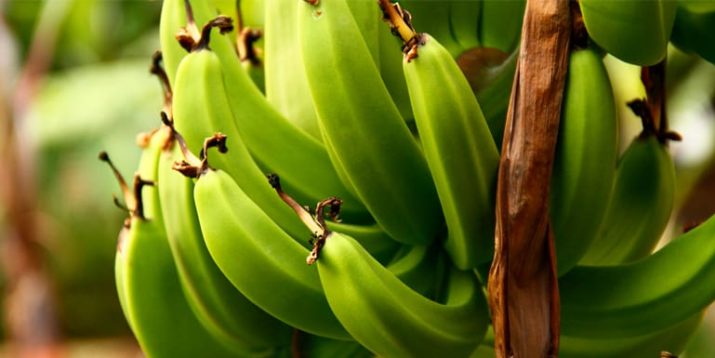What Is Banana Flour?

“Resistant starch” is a buzz term that sounds more like it applies to dry cleaning than dinner. It’s the name for starches — in foods, that is! — that resist digestion. That resistance may help improve insulin sensitivity and increase satiety, meaning you may stay full longer with less of a blood sugar spike and drop. Because your body can’t break down these low-glycemic starches, it treats them differently than starches in foods like potatoes.
There are several ways to get more resistant starches into your diet. One that’s become popular recently? Banana flour.
What Is Banana Flour?
This gluten-free, Paleo-friendly flour is made by grinding unripe bananas, but yet, doesn’t taste like the sweet fruit. It also contains antioxidants and a hefty amount of fiber — about 3.4 grams of fiber in half a cup. This is why large doses can cause bloating, so start with a small amount and work your way up.
How to Use Banana Flour
The easiest way to use banana flour is to add it to a smoothie or protein shake. You can start with a very small quantity, such as a teaspoon, and the texture won’t affect your beverage much.
You can also use it to thicken salad dressings — about one tablespoon of banana flour is plenty for one cup of dressing. The dressing will thicken immediately, and will grow thicker still if left in the fridge. If you don’t plan on using the full batch you make in one sitting, use less banana flour so that you don’t end up with a dressing you can’t even pour. Store any leftovers in the fridge for up to a week.
Use banana flour in faux “baked” goods such as raw brownies or cookies. Typically made by blending or processing a base of soaked nuts, dates, and cacao powder together, adding one to two tablespoons of banana flour will bump up the fiber and aid in the glycemic response if you use maple syrup or honey for additional sweetness.
You can substitute some banana flour for white flour in baking recipes, and you’ll benefit from consuming a whole food instead of a refined one. However, if you want to keep its resistant starch active, don’t heat it. When heated, it becomes accessible to digestive enzymes, which renders it ineffective at being a resistant starch.
By trying one of the above ideas, you’ll be on the resistant starch bandwagon and reaping its benefits.
How to Make Banana Flour at Home
It’s easiest to purchase banana flour online; Amazon and Thrive Market sell it. Keep in mind that it’s a specialty item, so don’t expect to pay $3 a bag like you might for all-purpose flour.
Translation: If you’re opposed to paying what some may consider the outlandish cost of banana flour (around $10.99 for one pound), you could DIY at home. It’s a multi-step labor of love, but here’s how to transform three pounds of green bananas into one pound of banana flour:
- Buy (very) green bananas or green plantains.
- Separate the bananas and cut the very tops off. Peel the skins.
- Dice bananas into about half-inch cubes. Spread them out in a single layer onto cookie sheets.
- Place in a 200°F oven for two to three hours, or until banana cubes are dried out. Remove from oven and cool.
- Grind banana cubes in a high-speed blender or food processor until it resembles a fine flour. If the bananas are sticky and not grinding, place them back in the oven to dry out for longer.
- Sift the banana flour, and store in dry, airtight containers. Store in a cool, dry place as you would other flours. If you don’t use it often, stash in the freezer to extend its shelf life.
